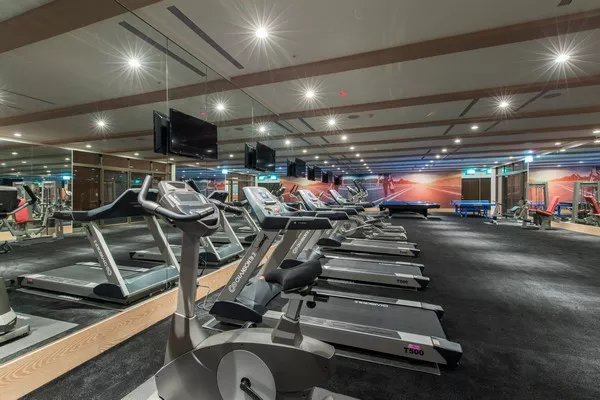Getting ripped abs is a challenging task at any age, but it can be even more challenging as we get older. As we age, our metabolism slows down, and our body composition changes, making it harder to lose weight and build muscle mass. However, with the right diet, exercise routine, and lifestyle habits, it’s possible to achieve ripped abs at 50. In this comprehensive guide, we will explore these strategies in more detail.
Understanding Body Composition
Before diving into the specific strategies for getting ripped abs at 50, it’s essential to understand body composition. Body composition refers to the proportion of fat, muscle, and bone in the body. As we age, our body composition changes, with a loss of muscle mass and an increase in body fat.
While some body fat is necessary for bodily functions, too much body fat can lead to health issues like heart disease, diabetes, and high blood pressure. Additionally, a decrease in muscle mass can lead to decreased metabolism, making it harder to burn calories and lose weight.
Proper Nutrition
The first step in getting ripped abs at 50 is proper nutrition. To achieve a lean physique, you need to create a calorie deficit, which means consuming fewer calories than your body needs to maintain its current weight. This can be achieved by reducing your caloric intake or increasing your physical activity, or a combination of both.
It’s important to consume a balanced diet that includes plenty of fruits, vegetables, lean protein, and healthy fats. Eating smaller, more frequent meals throughout the day can also help regulate blood sugar levels and keep hunger at bay.
Additionally, limiting your intake of processed foods, sugary drinks, and saturated fat can help reduce overall caloric intake and aid in weight loss.
Cardiovascular Exercise
The second step in getting ripped abs at 50 is cardiovascular exercise. Cardiovascular exercise, also known as cardio, is any activity that elevates your heart rate and increases oxygen consumption.
Regular cardio can help create a calorie deficit and burn away body fat, including the layer over your abs. Aim for at least 150 minutes of moderate-intensity cardio or 75 minutes of vigorous-intensity cardio per week.
Some examples of cardiovascular exercises include running, cycling, swimming, rowing, or using an elliptical machine. High-intensity interval training (HIIT) can also be effective for burning fat and building endurance.
Targeted Strength Training
The third step in getting ripped abs at 50 is targeted strength training. While exercises like crunches and planks won’t burn away body fat, they can help strengthen your abdominal muscles, giving them a more defined appearance.
In addition to abdominal exercises, it’s important to incorporate full-body strength training into your workout routine. This can help increase muscle mass, which can boost metabolism and aid in weight loss. Some examples of full-body strength training exercises include squats, lunges, push-ups, and pull-ups.
It’s important to vary your strength training routine regularly to prevent plateaus and keep your workouts challenging. Additionally, it’s essential to allow for proper rest and recovery between workouts to prevent injury.
Flexibility and Mobility Training
The fourth step in getting ripped abs at 50 is flexibility and mobility training. As we age, our joints and muscles can become stiffer, leading to decreased range of motion and increased risk of injury.
Incorporating stretches and mobility exercises into your workout routine can help increase flexibility, improve posture, and decrease the risk of injury. Some examples of flexibility and mobility exercises include yoga, Pilates, foam rolling, and dynamic stretching.
Other Strategies
In addition to proper nutrition, cardiovascular exercise, targeted strength training, and flexibility and mobility training, there are other strategies you can use to aid in weight loss and getting ripped abs at 50.
Proper hydration is critical for weight loss and overall health. Drinking plenty of water throughout the day can help regulate appetite, improve digestion, and boost metabolism.
Getting adequate sleep is also essential for weight loss. Lack of sleep can disrupt hormones that regulate appetite, leading to increased hunger and cravings.
Stress management is another important factor in weight loss. Chronic stress can increase levels of the hormone cortisol, which can lead to an increase in body fat storage, particularly around the abdominal area. Finding healthy ways to manage stress, such as meditation or yoga, can aid in weight loss efforts.
Conclusion
In conclusion, getting ripped abs at 50 requires a combination of proper nutrition, cardiovascular exercise, targeted strength training, flexibility and mobility training, hydration, adequate sleep, and stress management. By creating a calorie deficit through proper nutrition and cardio, building muscle mass through strength training, improving posture and decreasing injury risk through flexibility and mobility training, and incorporating other healthy lifestyle habits, you can achieve a leaner and more defined physique. It’s essential to be patient, consistent, and committed to making long-term lifestyle changes to see lasting results.
Related topics:


